- Home
- Tom Clancy
Into the Storm: On the Ground in Iraq sic-1 Page 41
Into the Storm: On the Ground in Iraq sic-1 Read online
Page 41
I did not agonize that night over my decision not to continue, much less second-guess myself. I was looking ahead to our objective. As we approached the RGFC, I thought about the moves and countermoves available to us and to them. I wanted them fixed and out of options while we still had some left. As I had been doing all along whenever I could, I stared at the map, making it come alive in my head. We are here, they are there. What do I want it to look like when we are successful? How do I get us from this state to that state at least cost?
I war-gamed in my head, involved some others, thought out loud with Stan. That not only helped me think my way through the next few days, it also got Stan inside my head, where he needed to be.
The bottom line that night was that I thought the RGFC would stay in a posture that would make FRAGPLAN 7 the best scheme of attack. I needed one more look to confirm it the next day. The timing depended on our being able to go from our current formation alignment to our attack alignment in less time than the Iraqis could react. I also could not wait too long or the corps would not be able to execute. My key "reads" the next day would be our posture and the Iraqis'. Then I would decide.
Commanders of large campaigns and of large land forces don't think in chronological terms. They think in terms of the mission against a particular enemy, the organization of their forces on the ground, the time it takes to get their forces in a posture to accomplish their mission on that terrain and at the least cost to their own side. Sometimes they will think in terms of hours to accomplish all this, sometimes in terms of days. Sometimes the mission will take hours, sometimes it will take days.
Thus, when we examine what happened in a campaign such as Desert Storm on Day 1 (24 February), on Day 2, Day 3, and Day 4, rather than at the actual phases of the battle as they developed (and which didn't follow the rhythms of day and night), we miss the context within which a senior tactical commander views the battle and uses time.
In other words, during Desert Storm, I did not think in terms of discrete days. On the first day, on the twenty-fourth, when we were ordered to attack early, I was thinking in the present: we had lots to do to pull that off. But I also was thinking two days in advance. I knew that decisions I would make that first day would influence the posture the corps could get into on the third day, the twenty-sixth.
The third day was the key day, for in my judgment, that was when we would attack the Republican Guards. I would make the decision about how to attack them on the second day, and the first day's decisions would determine the range of alternatives available to me then. So in Desert Storm (other situations would have required different kinds of thinking), I thought in continuous periods of 12, 24, 48, and 72 hours, regardless of days. I also was aware that in large tactical organizations in large land battles, you cannot make many decisions over short time spans that cause major maneuvers. That is why you forecast key decision points and make decisions that stick. For that reason, my intent was to issue orders to my subordinate commanders that would last at least twelve hours before I had to change those instructions. In the event that I had to issue instructions that would cause a major rearrangement of the corps within our overall basic plan, I needed to give them as much as twenty-four hours. A total plans change, done from a cold start without warning — such as, for instance, an attack to Baghdad — might have taken as much as seventy-two hours from receipt to execution.
About midnight, I told Toby to wake me for anything significant, then left the enclosed area and went to get some rest. Stan and most of the TAC team were still at it when I left.
At 0500 on the twenty-fifth, I was awake and back at it. A quick paper cup of coffee, a few moments to strap on my leg and the other boot, shoulder holster, and Kevlar, then a short walk over to the TAC CP. The charcoal-lined chemical protective overgarment we all wore felt good in the early-morning cold. Stan Cherrie and the TAC team were already in there, and radios were already alive with reports.
CHAPTER TEN
Turn East
0600 VII CORPS TAC CP SAUDI ARABIA 25 FEBRUARY 1991
DURING the very brief — less than twenty-minute — morning update, I was interested in answers to the following questions: What was our situation? The enemy's situation? Where were we vulnerable? Where was the enemy vulnerable? What was happening on the flanks? Had higher HQ issued any changes? Did we need to make any adjustments to exploit an enemy vulnerability or to protect one of our own? Did anyone have any recommendations? Wherever I went, I looked for answers, for these formed the basis of my continuing running estimate.
I hadn't been away from the map long; things hadn't changed a lot.
G-2 went quickly over the enemy situation, then Stan reviewed the battle activities since midnight. Our units reported more prisoners. There were reports from 2nd ACR, as it approached Phase Line Smash, of battalion-sized units and heavy Iraqi equipment, such as tanks, which were early indicators that we could expect increased enemy actions the closer we got to the RGFC. As for the actual RGFC divisions, they did not appear to be going anywhere. They were still in position, attempting to set a defense. The earlier report that a brigade of the Hammurabi was moving out indicated that they might even be trying some kind of maneuver or repositioning north or west. As we had expected, they were not retreating. At this point, I did not know how much they knew about us. By now they were probably aware of a force out to the west, but I did not think they realized our size and capabilities. The early indicators showed some attempt at reorientation, but at this point it seemed to me they still believed the main attack was coming north up the Wadi.
I had no information otherwise from my own VII Corps sources or from Third Army. Because the Iraqi defense was hasty and not well coordinated, they were vulnerable to a massed fist attack. Good.
We had not gotten any change in orders from Third Army.
While I received this short briefing, the radios in the TAC continued to come alive with short-burst transmissions, as corps units reported moves, locations, and enemy contacts, and gave situation reports. Each staff section was busy on the phone getting longer messages or reports, and our NCOs were back and forth in both G-2 and G-3, posting the latest friendly and enemy situations on the map. Troops were already beginning to break the TAC down, getting ready to move as soon as I left. The breakdown of the TAC normally took less than an hour if you had had a lot of practice, and by now these soldiers had had a lot of practice.
Throughout all this, I was both thinking and listening — redoing my mental map of enemy and friendly units based on the briefing, looking forward to key decisions I needed to make that day in order to set corps action in motion to accomplish objectives the next day. First, I did not want to give the Iraqis any more time to set a defense. Second, this was the day to commit to our attack formation. FRAGPLAN 7[28] still looked like the best choice, though questions remained about 1st CAV, which was still being held by General Schwarzkopf in CENTCOM reserve.
I was also thinking of where I needed to go that morning to get information (or to confirm what I already had), to get a feel for the battles and their tempo, and reinforce what I wanted done face-to-face with the commanders.
Right now, I was getting maybe 20 percent of my input from my staff at the CP; 40 to 50 percent from what I was seeing and hearing myself, and from my commanders as I met them; and the rest came from my own professional knowledge, training, education, and combat experience.
As we saw in an earlier chapter (but it bears repeating now), most often you decide to decide. You ask yourself the question: Do I need to intervene and make an adjustment, or do I let the battle continue as it is? Most often a senior commander does not need to decide; he can leave things to subordinates rather than tinker at the margin. Senior tactical commanders really get to make only a few key decisions. It is better for them to focus their energies there, and trust their subordinates, who are in a better position to make their own decisions. Knowing the difference is the art of command. So is determining the tempo of the attac
k to keep your enemy off balance, and knowing when to be bold — when to take risks and gamble — and when not to.
I would take all those elements into consideration that day as I selected the attack formation to destroy the RGFC. I would also have to find a third division for the attack… or else do without and use the 2nd ACR. Earlier, I had told Don Holder to be prepared to go all the way to Objective Denver if the opportunity presented itself. (Denver was on Highway 8, just south of the Iraq-Kuwait border.) By looking at our unit locations on the map and the enemy situation, and by doing some quick mental time/distance calculations, I could sense the time for that decision getting close.
That meant I had to get on the move, and I needed to talk to my commanders face-to-face.
But I was going nowhere right now. High winds and blowing sand, which reduced visibility to a few hundred meters, had grounded us. I was now a prisoner of the CP and tied to the comms.
Meanwhile, I got reports from our flanks.
Word from our eastern flank was that the Egyptian attack was slow in getting under way. Earlier, that might have bothered me, but not now, because so far the Iraqis had been unable to react. More important, I would have the British out there shortly.
That was important, because until the British could attack out of the breach to the east, Iraqi forces now opposite the Egyptians could be ordered to back out in order to thicken the RGFC defense, or even retreat across our sector along the blacktop road that ran roughly northwest on our Phase Line Smash to al-Busayyah. If they did either, they would threaten the steady stream of fuel tankers moving north from Nelligen to the 1st and 3rd ADs. If any of those Iraqi units — even by accident — ran into one of our convoys on the way to refuel the enveloping units, it would be a disaster from which we could not recover. Leaving logistics that vulnerable was a gamble I was not prepared to take.
On our western flank, 1st AD 1/1 Cavalry was maintaining physical contact with XVIII Corps. Internal flank contacts were also good. In the desert, where there were no navigation features to act as guide points, we had to pay close attention to flank contacts. For navigation, units only had GPS, and at those times of the day when there were no satellites, most of them had to use old-fashioned dead reckoning. As a result, the risk of units running into, or else crossing in front of, one another was high throughout the war. When you have tank cannons that fire projectiles that are lethal past 3,000 meters at a mile a second, and when there are no natural terrain features to stop those projectiles, commanders at all levels pay close attention to flank contact.
At that point, I used the delay to talk to John Yeosock. Because John's liaison in my TAC CP, Colonel Dick Rock, had been keeping Third Army well informed of our locations and actions, John had a pretty good picture of our situation (Dick Rock was excellent at giving this information as he knew it; his challenge was that he often was not completely up-to-date, either because the TAC was moving or because he was not with me and could not hear my discussions with commanders). I explained to John what I anticipated doing today, and he agreed with it.
It was after that, though, that John dropped some surprising news on me: the CINC was concerned that we were not moving fast enough. For a moment, that hit me hard. It takes a lot of wind out of your sails when your theater commander seems disappointed in your progress. As a subordinate, you do not want to get on the bad side of your boss, so it was a blow when I learned that my boss's boss was not happy about our progress.
My first thought was defensive: We had done well even to have gotten to where we were this morning, given the fifteen-hour advance start, I said to John; you know what we have been doing and why. And he agreed: he was pleased with our progress and convinced that, as the commander on the ground, I had the best feel of what to do. And, in fact, he gave me no new orders, nor was there any change of mission.
When John told me that in fact he thought we were doing fine, I decided not to give the CINC's concerns much more thought (at the time). It looks like they don't have a good picture of the corps situation in Riyadh, I told myself, and when they do, this will blow over. It had just been a quick, passing comment. I chalked the whole thing up to the usual emotion of battle.
Certainly, nothing John had told me led me to change my mind about what I needed to do, and in fact, in the press of commanding and maneuvering the corps, I soon forgot all about it (and the episode did not get noted in either my own journal or in Toby Martinez's log). Changes of orders I understood; I would have executed them. But concerns were not orders. There were concerns all over the place. If commanders want to do something about them, they give orders to their subordinates, but neither the CINC nor John Yeosock had told me to do anything different.
After the war, I was to find out that John had been shielding me from an extraordinary emotional outburst from General Schwarzkopf during his morning update. He had — I have gathered from later reports — hit the ceiling. He had expected a VII Corps cavalry charge to the Republican Guards, and when he didn't get it, he blew up into one of his well-publicized rages. Since John Yeosock had much more experience with large armored maneuvers than Schwarzkopf, he knew that the CINC's expectations were illusory. And so he did what many commanders do — he absorbed the blow and shielded his subordinates. He toned down the CINC's blowup to "concerns" when we talked that morning. Yeosock did that a lot both before and during the war for both VII and XVIII Corps.
It is also important to note that Third Army HQ in Riyadh was three miles away from the CINC's underground war room. Most communications between Yeosock and Schwarzkopf were by phone.
Later commentators — including General Schwarzkopf — have claimed that from virtually the first moments of the G-Day attack, the U.S. Army should have been in "pursuit mode" rather than in what we call "movement to contact." More bluntly: they have accused VII Corps of failing to go into pursuit when we should have. However, you go into pursuit when your enemy is in retreat or fleeing. Though that's what Iraqi units elsewhere were doing, that was not the case with the RGFC. They were setting up a defense. Even if the CINC had told us to go into pursuit (which he did not do), it would have been a mistake. His concern should have been to isolate and cut off the RGFC, mostly by air, so that VII Corps and XVIII Corps could destroy them. Instead, he flew into a rage about how fast we were going, based on blue lines on a map in Riyadh that probably were not even accurately posted.
0725 VII CORPS TAC CP
Because we were co-located with 3rd AD (which was still corps reserve at that point), Butch Funk took the opportunity to come see me.
At that time, Butch, real pro that he is, was doing what any good reserve commander would do. He was trying to anticipate the possible commitment of his unit so he could make plans — and maybe even rehearse them. When he came into the CP at 0725, I had two things on my mind: I wanted to keep him moving toward the RGFC, but I also wanted him to continue protecting our right flank from stray Iraqi units or vehicles until the British got out there in force. Butch "rogered" that, then gave me a quick update: he was maneuvering his division from a column of brigades to two brigades up and one back. I acknowledged it, and told him my intent was to position my TAC CP with, or close, to his own, in the center sector.
It was a good, relaxed moment for both of us, and we were able to enjoy a paper cup of black coffee together from our coffeepot in the CP. The operation was going well. Because he and I saw eye to eye on the maneuver, we did not require a whole lot of communication. I was fortunate in all of my commanders — it worked that way with all of them.
After my talk with Butch, I had a few minutes to myself (for the time being, the weather made it impossible to go anywhere). It was a welcome respite, and it gave me the opportunity to go over again what it is we were doing and why. Before I went out to visit commanders, I wanted to take a hard look at our primary mission and our tactics. I wanted to be as certain as I possibly could that what we were about to do would destroy the RGFC, and I wanted to review for myself that my in
tent and orders to the corps were still the right ones. These thoughts had been on my mind constantly, and they remained on my mind until the battles with the Iraqis ended. I looked at them from every possible angle, again and again:
I had planned a rolling attack through Objective Collins into the flank and rear of the RGFC. We were not in pursuit of a retreating enemy, but preparing to attack a hastily defending enemy armored force.
I had not considered any maneuver except to aim VII Corps directly at that force. That was our mission: to destroy the RGFC, not surround them. The only way to do that, in my judgment, was to hit them in such a way that they could not contend with us, and to keep hammering them until they quit or we had destroyed them. I remembered again what George Patton III had said in Vietnam, in the Blackhorse: "Find the bastards, then pile on." After we had found them and fixed them, I wanted to maneuver VII Corps into a position from which we could not only attack them, but pile on.
In all of our briefings, it had been made clear that if the RGFC defended from where they were, the theater plan was for CENTAF — the Air Force — to isolate them. In Colin Powell's words, they were the ones who would "cut them off." We were the force that would "kill them."
After I thought about the mission, I thought again about the time it would take. From the first, I had thought the campaign would last eight days: two days to get to the RGFC, four days to destroy them, and two days to consolidate what we had done. Those first two days were not only a function of the Iraqi army, but of time/distance, the coherence of our formations, and the freshness of our troops for the anticipated fight. From our line of departure to Collins, our way point just past Phase Line Smash, it was about 150 kilometers. If I decided on FRAGPLAN 7, I wanted a three-division moving fist of reasonably fresh troops at Collins, with enough fuel to sustain the attack until the RGFC was destroyed.

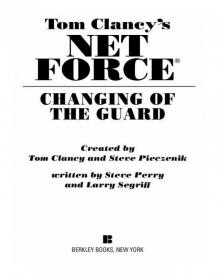 Changing of the Guard
Changing of the Guard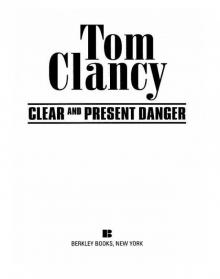 Clear and Present Danger
Clear and Present Danger Hounds of Rome
Hounds of Rome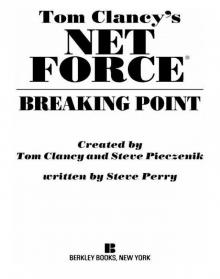 Breaking Point
Breaking Point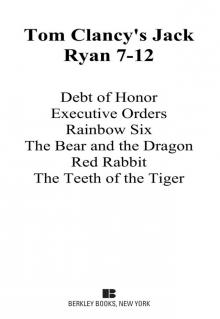 Tom Clancy's Jack Ryan Books 7-12
Tom Clancy's Jack Ryan Books 7-12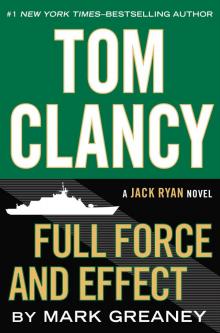 Full Force and Effect
Full Force and Effect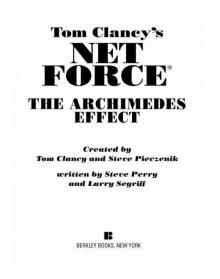 The Archimedes Effect
The Archimedes Effect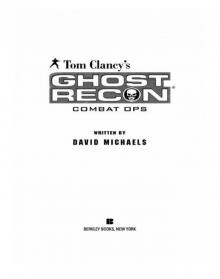 Combat Ops
Combat Ops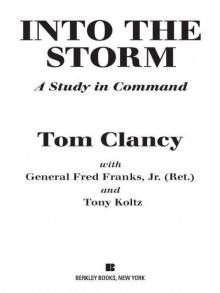 Into the Storm: On the Ground in Iraq
Into the Storm: On the Ground in Iraq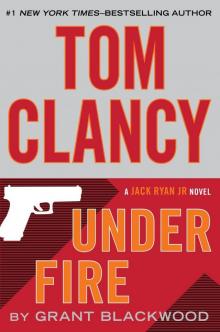 Under Fire
Under Fire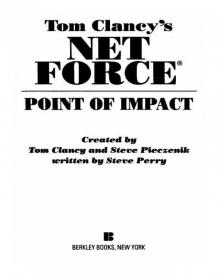 Point of Impact
Point of Impact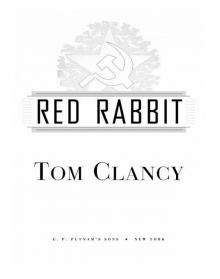 Red Rabbit
Red Rabbit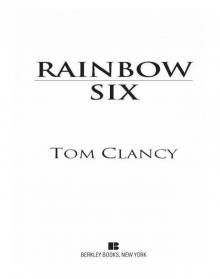 Rainbow Six
Rainbow Six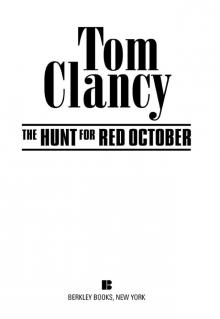 The Hunt for Red October
The Hunt for Red October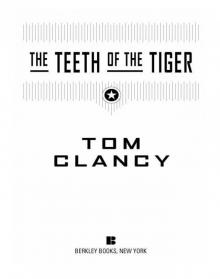 The Teeth of the Tiger
The Teeth of the Tiger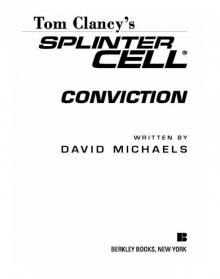 Conviction (2009)
Conviction (2009)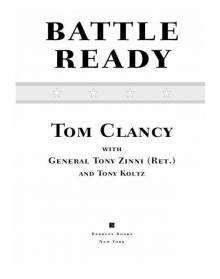 Battle Ready
Battle Ready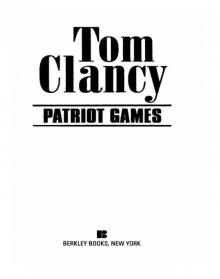 Patriot Games
Patriot Games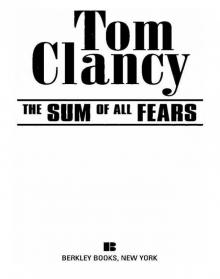 The Sum of All Fears
The Sum of All Fears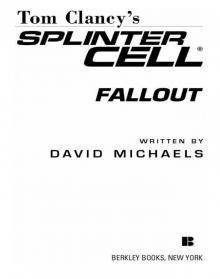 Fallout (2007)
Fallout (2007)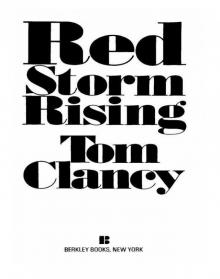 Red Storm Rising
Red Storm Rising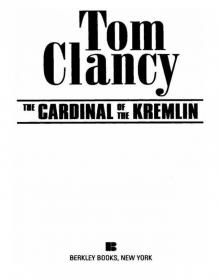 The Cardinal of the Kremlin
The Cardinal of the Kremlin Executive Orders
Executive Orders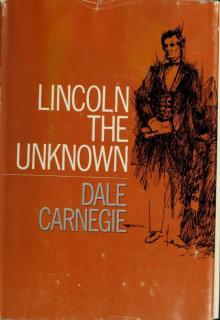 Lincoln, the unknown
Lincoln, the unknown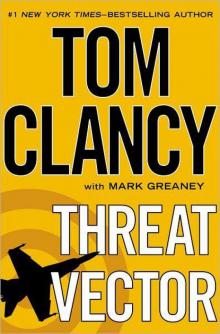 Threat Vector
Threat Vector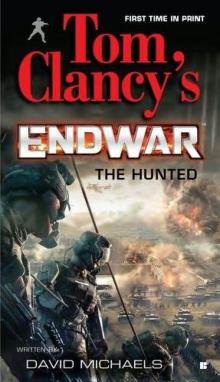 The Hunted
The Hunted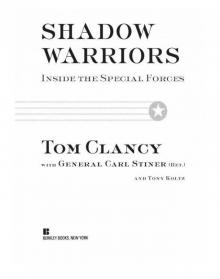 Shadow Warriors: Inside the Special Forces
Shadow Warriors: Inside the Special Forces End Game
End Game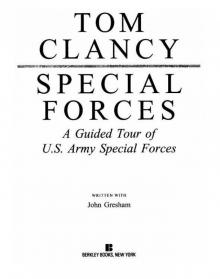 Special Forces: A Guided Tour of U.S. Army Special Forces
Special Forces: A Guided Tour of U.S. Army Special Forces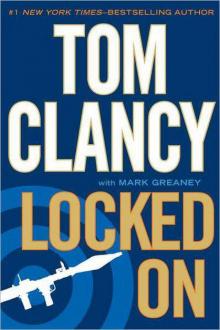 Locked On
Locked On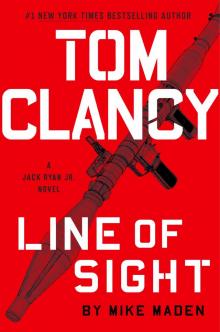 Line of Sight
Line of Sight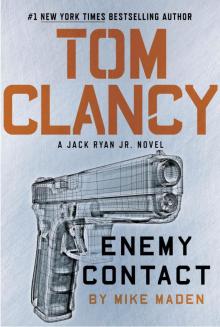 Tom Clancy Enemy Contact - Mike Maden
Tom Clancy Enemy Contact - Mike Maden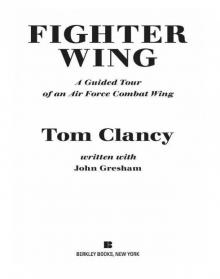 Fighter Wing: A Guided Tour of an Air Force Combat Wing
Fighter Wing: A Guided Tour of an Air Force Combat Wing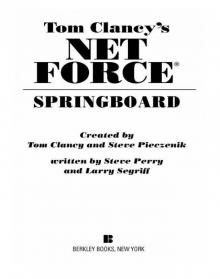 Springboard
Springboard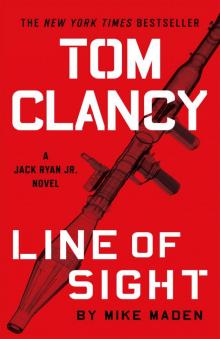 Line of Sight - Mike Maden
Line of Sight - Mike Maden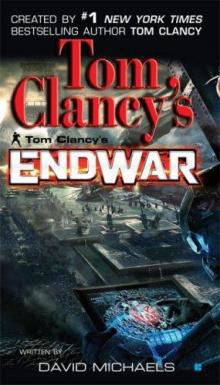 EndWar
EndWar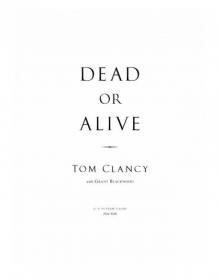 Dead or Alive
Dead or Alive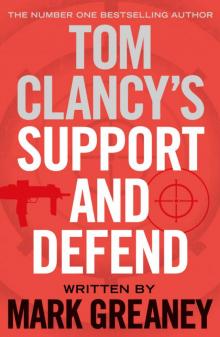 Tom Clancy Support and Defend
Tom Clancy Support and Defend Checkmate
Checkmate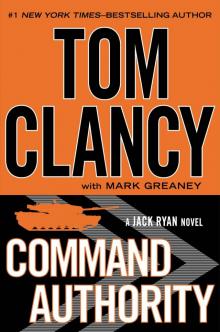 Command Authority
Command Authority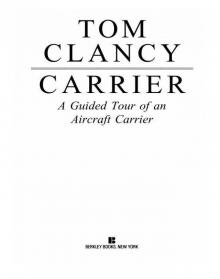 Carrier: A Guided Tour of an Aircraft Carrier
Carrier: A Guided Tour of an Aircraft Carrier Blacklist Aftermath
Blacklist Aftermath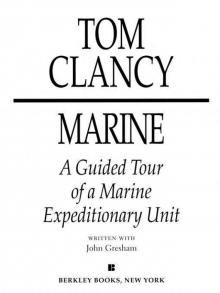 Marine: A Guided Tour of a Marine Expeditionary Unit
Marine: A Guided Tour of a Marine Expeditionary Unit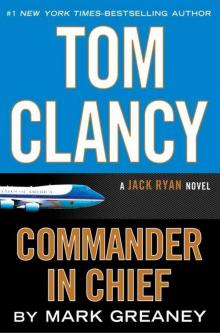 Commander-In-Chief
Commander-In-Chief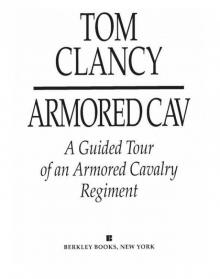 Armored Cav: A Guided Tour of an Armored Cavalry Regiment
Armored Cav: A Guided Tour of an Armored Cavalry Regiment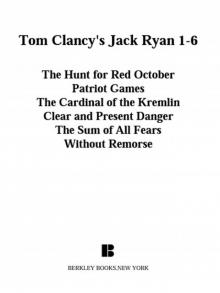 Tom Clancy's Jack Ryan Books 1-6
Tom Clancy's Jack Ryan Books 1-6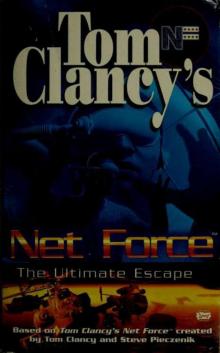 The Ultimate Escape
The Ultimate Escape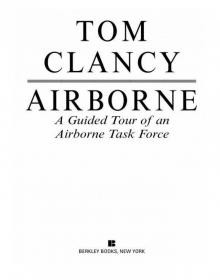 Airborne: A Guided Tour of an Airborne Task Force
Airborne: A Guided Tour of an Airborne Task Force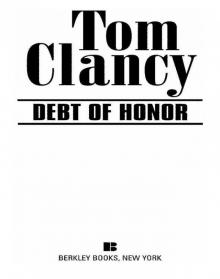 Debt of Honor
Debt of Honor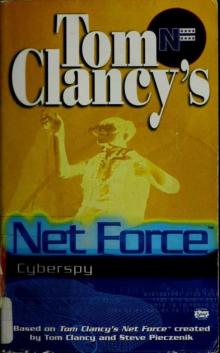 Cyberspy
Cyberspy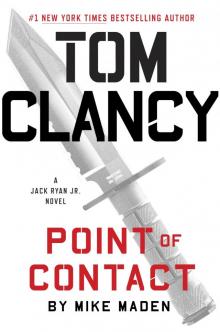 Point of Contact
Point of Contact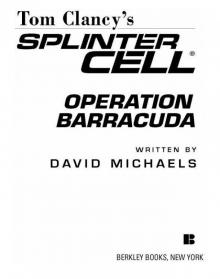 Operation Barracuda (2005)
Operation Barracuda (2005)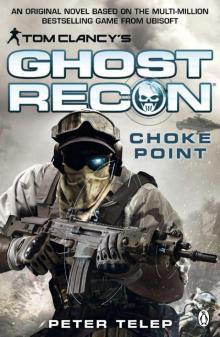 Choke Point
Choke Point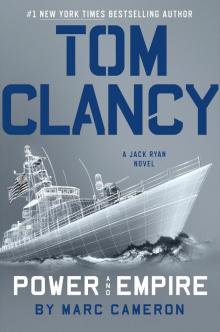 Power and Empire
Power and Empire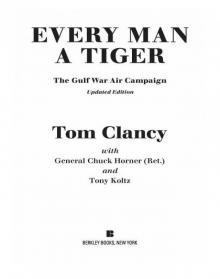 Every Man a Tiger: The Gulf War Air Campaign
Every Man a Tiger: The Gulf War Air Campaign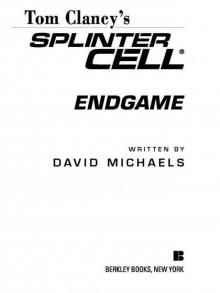 Endgame (1998)
Endgame (1998)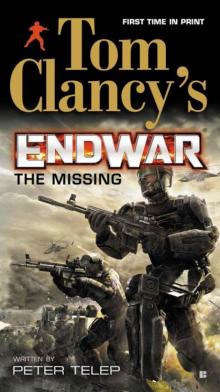 EndWar: The Missing
EndWar: The Missing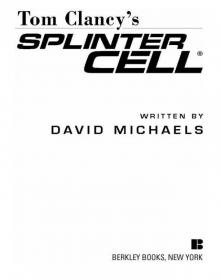 Splinter Cell (2004)
Splinter Cell (2004)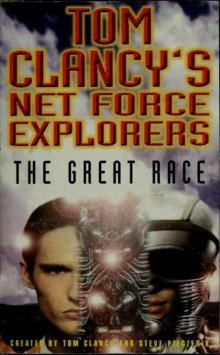 The Great Race
The Great Race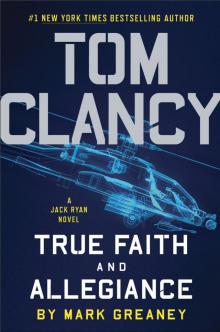 True Faith and Allegiance
True Faith and Allegiance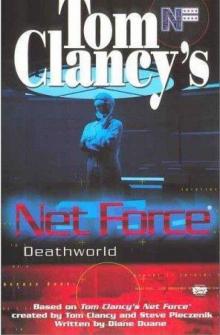 Deathworld
Deathworld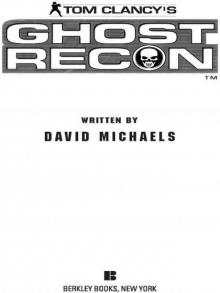 Ghost Recon (2008)
Ghost Recon (2008)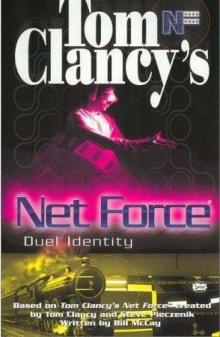 Duel Identity
Duel Identity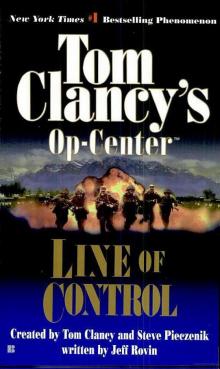 Line of Control o-8
Line of Control o-8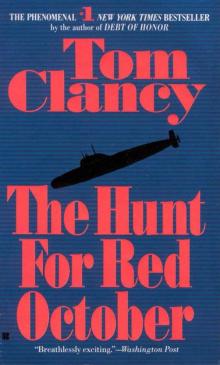 The Hunt for Red October jr-3
The Hunt for Red October jr-3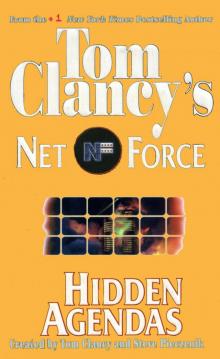 Hidden Agendas nf-2
Hidden Agendas nf-2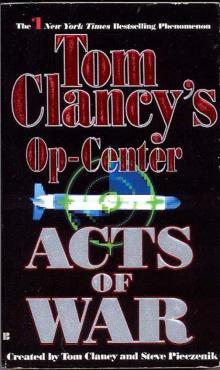 Acts of War oc-4
Acts of War oc-4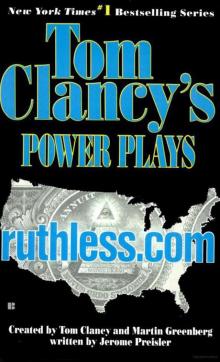 Ruthless.Com pp-2
Ruthless.Com pp-2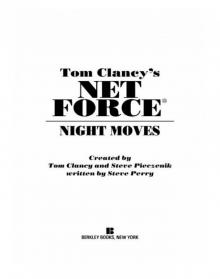 Night Moves
Night Moves The Hounds of Rome - Mystery of a Fugitive Priest
The Hounds of Rome - Mystery of a Fugitive Priest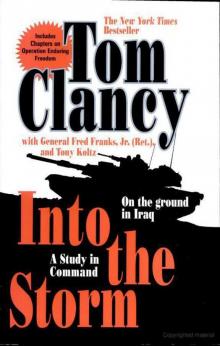 Into the Storm: On the Ground in Iraq sic-1
Into the Storm: On the Ground in Iraq sic-1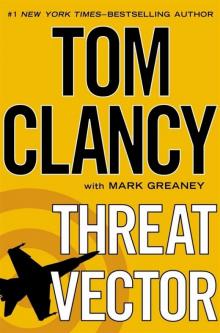 Threat Vector jrj-4
Threat Vector jrj-4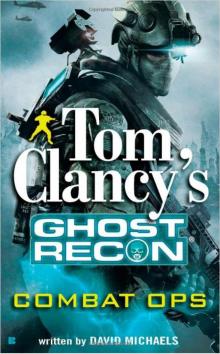 Combat Ops gr-2
Combat Ops gr-2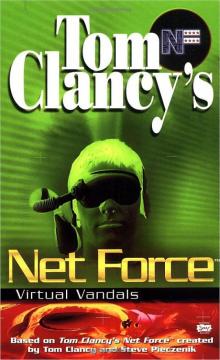 Virtual Vandals nfe-1
Virtual Vandals nfe-1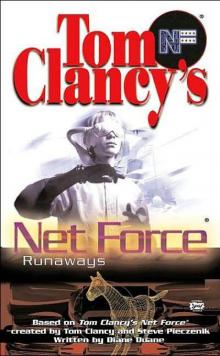 Runaways nfe-16
Runaways nfe-16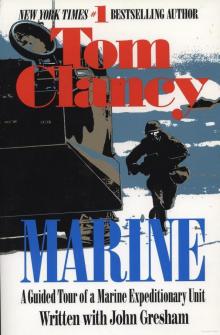 Marine: A Guided Tour of a Marine Expeditionary Unit tcml-4
Marine: A Guided Tour of a Marine Expeditionary Unit tcml-4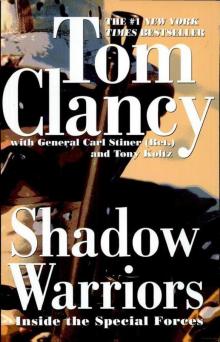 Shadow Warriors: Inside the Special Forces sic-3
Shadow Warriors: Inside the Special Forces sic-3 Jack Ryan Books 1-6
Jack Ryan Books 1-6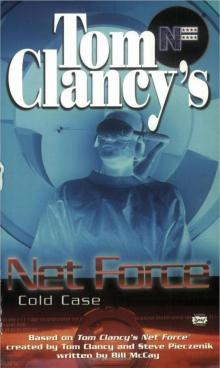 Cold Case nfe-15
Cold Case nfe-15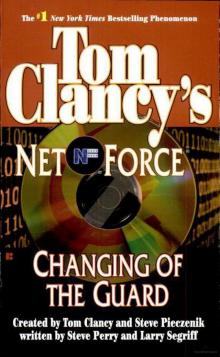 Changing of the Guard nf-8
Changing of the Guard nf-8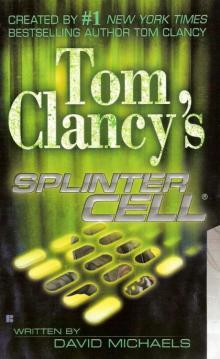 Splinter Cell sc-1
Splinter Cell sc-1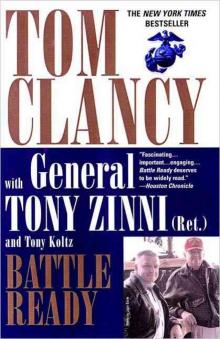 Battle Ready sic-4
Battle Ready sic-4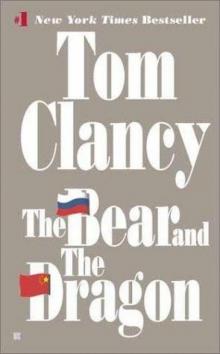 The Bear and the Dragon jrao-11
The Bear and the Dragon jrao-11 Fighter Wing: A Guided Tour of an Air Force Combat Wing tcml-3
Fighter Wing: A Guided Tour of an Air Force Combat Wing tcml-3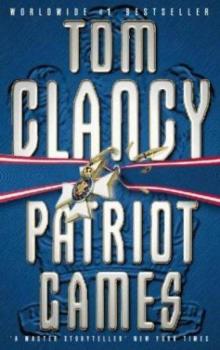 Patriot Games jr-1
Patriot Games jr-1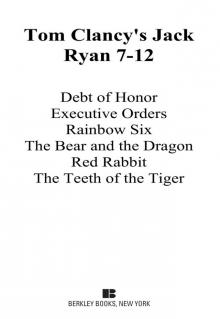 Jack Ryan Books 7-12
Jack Ryan Books 7-12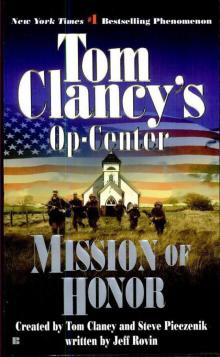 Mission of Honor o-9
Mission of Honor o-9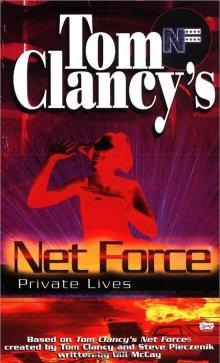 Private Lives nfe-9
Private Lives nfe-9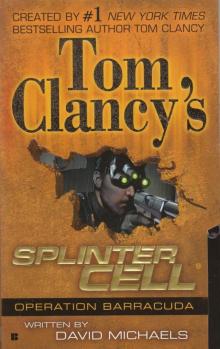 Operation Barracuda sc-2
Operation Barracuda sc-2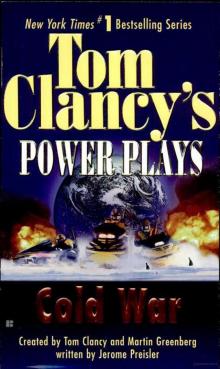 Cold War pp-5
Cold War pp-5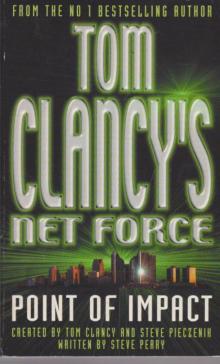 Point of Impact nf-5
Point of Impact nf-5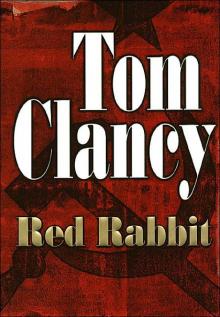 Red Rabbit jr-9
Red Rabbit jr-9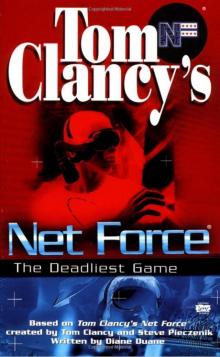 The Deadliest Game nfe-2
The Deadliest Game nfe-2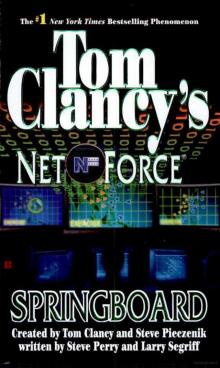 Springboard nf-9
Springboard nf-9 Safe House nfe-10
Safe House nfe-10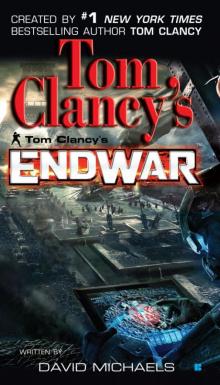 EndWar e-1
EndWar e-1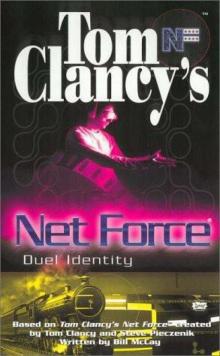 Duel Identity nfe-12
Duel Identity nfe-12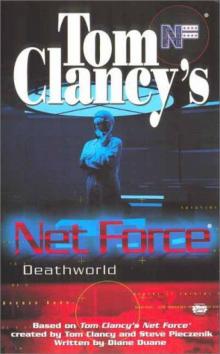 Deathworld nfe-13
Deathworld nfe-13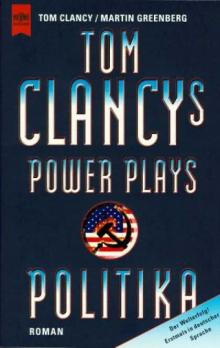 Politika pp-1
Politika pp-1 Rainbow Six jr-9
Rainbow Six jr-9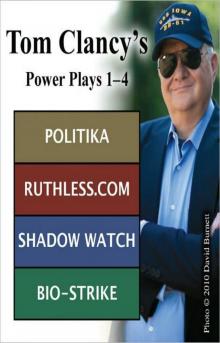 Tom Clancy's Power Plays 1 - 4
Tom Clancy's Power Plays 1 - 4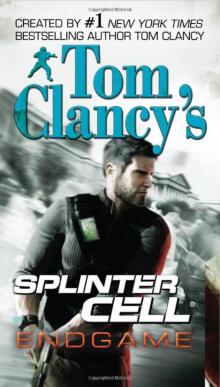 Endgame sc-6
Endgame sc-6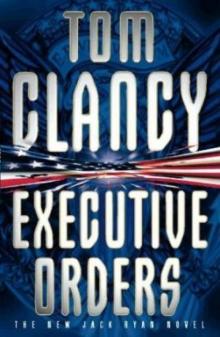 Executive Orders jr-7
Executive Orders jr-7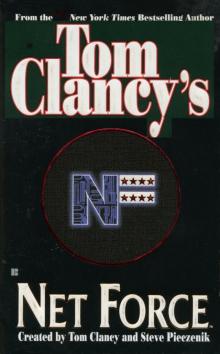 Net Force nf-1
Net Force nf-1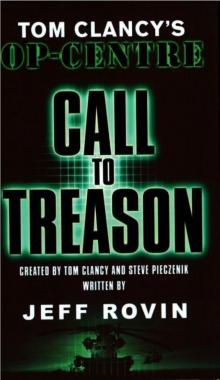 Call to Treason o-11
Call to Treason o-11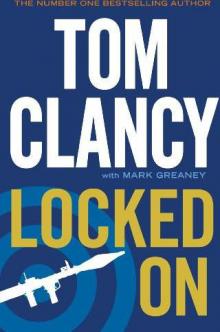 Locked On jrj-3
Locked On jrj-3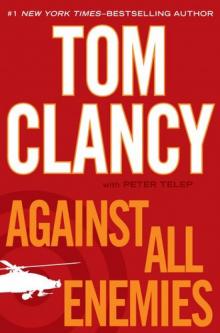 Against All Enemies
Against All Enemies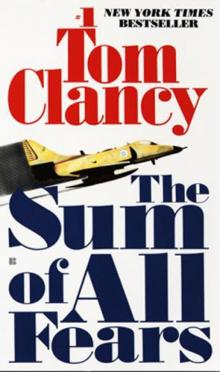 The Sum of All Fears jr-7
The Sum of All Fears jr-7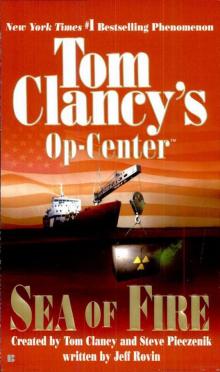 Sea of Fire o-10
Sea of Fire o-10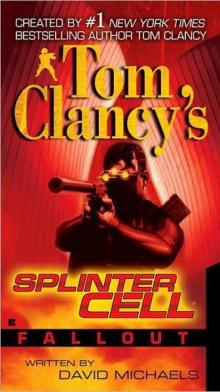 Fallout sc-4
Fallout sc-4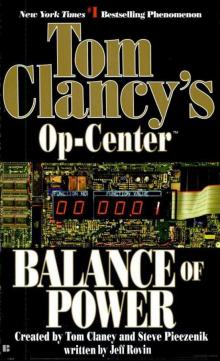 Balance of Power o-5
Balance of Power o-5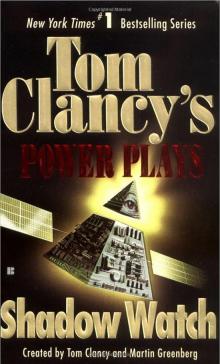 Shadow Watch pp-3
Shadow Watch pp-3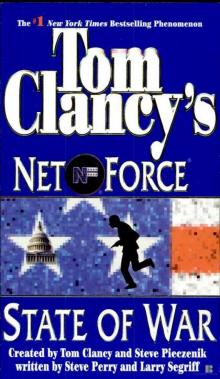 State of War nf-7
State of War nf-7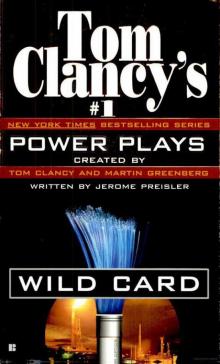 Wild Card pp-8
Wild Card pp-8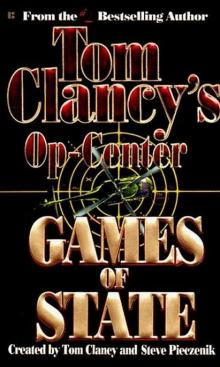 Games of State o-3
Games of State o-3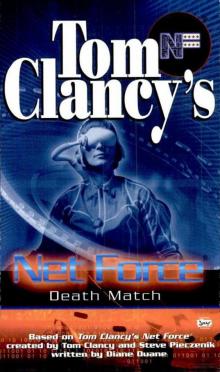 Death Match nfe-18
Death Match nfe-18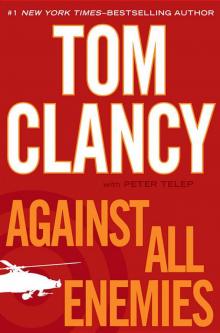 Against All Enemies mm-1
Against All Enemies mm-1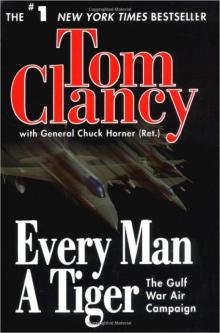 Every Man a Tiger: The Gulf War Air Campaign sic-2
Every Man a Tiger: The Gulf War Air Campaign sic-2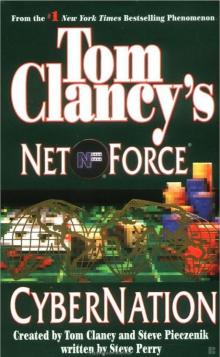 Cybernation nf-6
Cybernation nf-6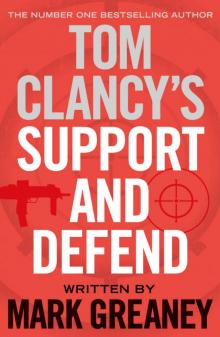 Support and Defend
Support and Defend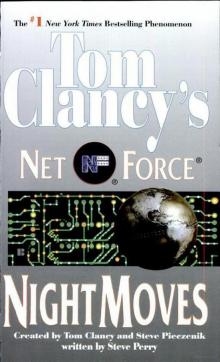 Night Moves nf-3
Night Moves nf-3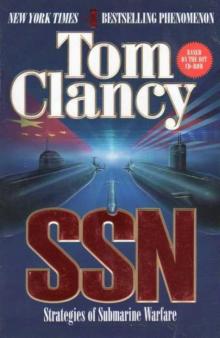 SSN
SSN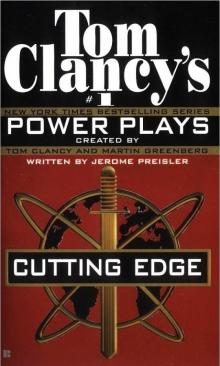 Cutting Edge pp-6
Cutting Edge pp-6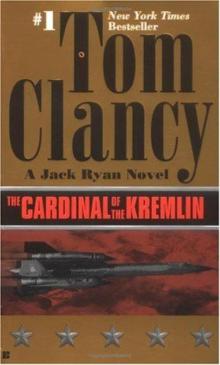 The Cardinal of the Kremlin jrao-5
The Cardinal of the Kremlin jrao-5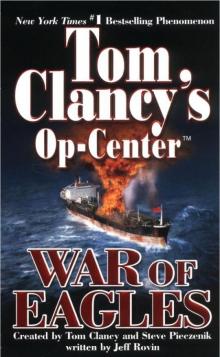 War of Eagles o-12
War of Eagles o-12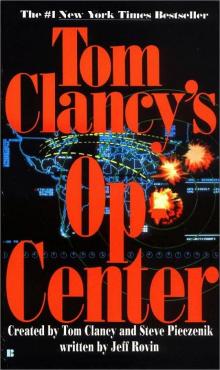 Op-Center o-1
Op-Center o-1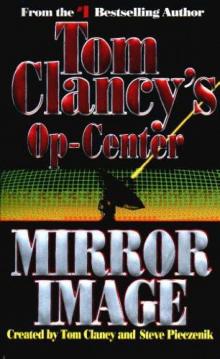 Mirror Image o-2
Mirror Image o-2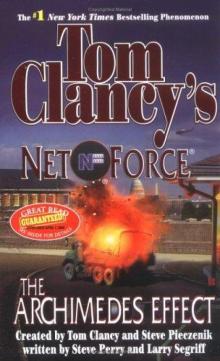 The Archimedes Effect nf-10
The Archimedes Effect nf-10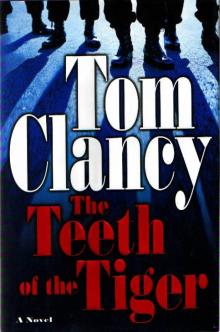 Teeth of the Tiger jrj-1
Teeth of the Tiger jrj-1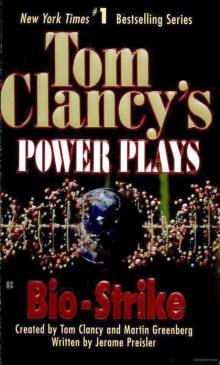 Bio-Strike pp-4
Bio-Strike pp-4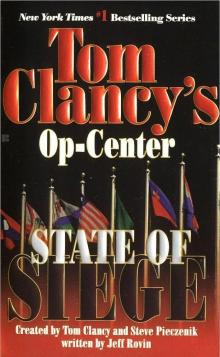 State of Siege o-6
State of Siege o-6 Debt of Honor jr-6
Debt of Honor jr-6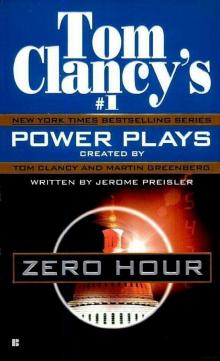 Zero Hour pp-7
Zero Hour pp-7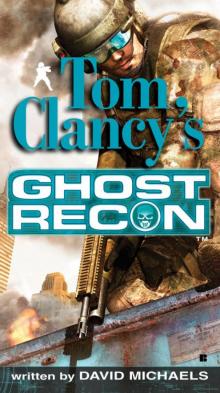 Ghost Recon gr-1
Ghost Recon gr-1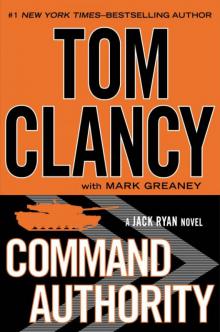 Command Authority jr-10
Command Authority jr-10 Tom Clancy's Power Plays 5 - 8
Tom Clancy's Power Plays 5 - 8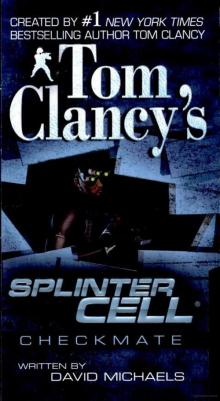 Checkmate sc-3
Checkmate sc-3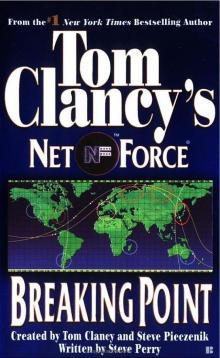 Breaking Point nf-4
Breaking Point nf-4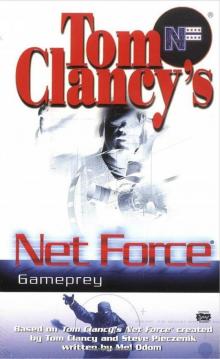 Gameprey nfe-11
Gameprey nfe-11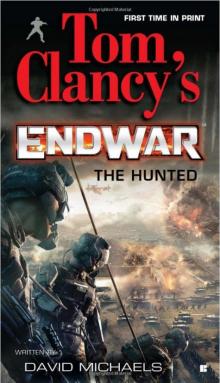 The Hunted e-2
The Hunted e-2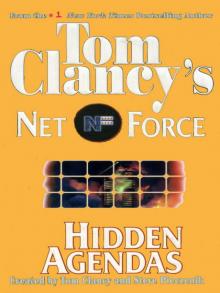 Hidden Agendas
Hidden Agendas Divide and Conquer o-7
Divide and Conquer o-7